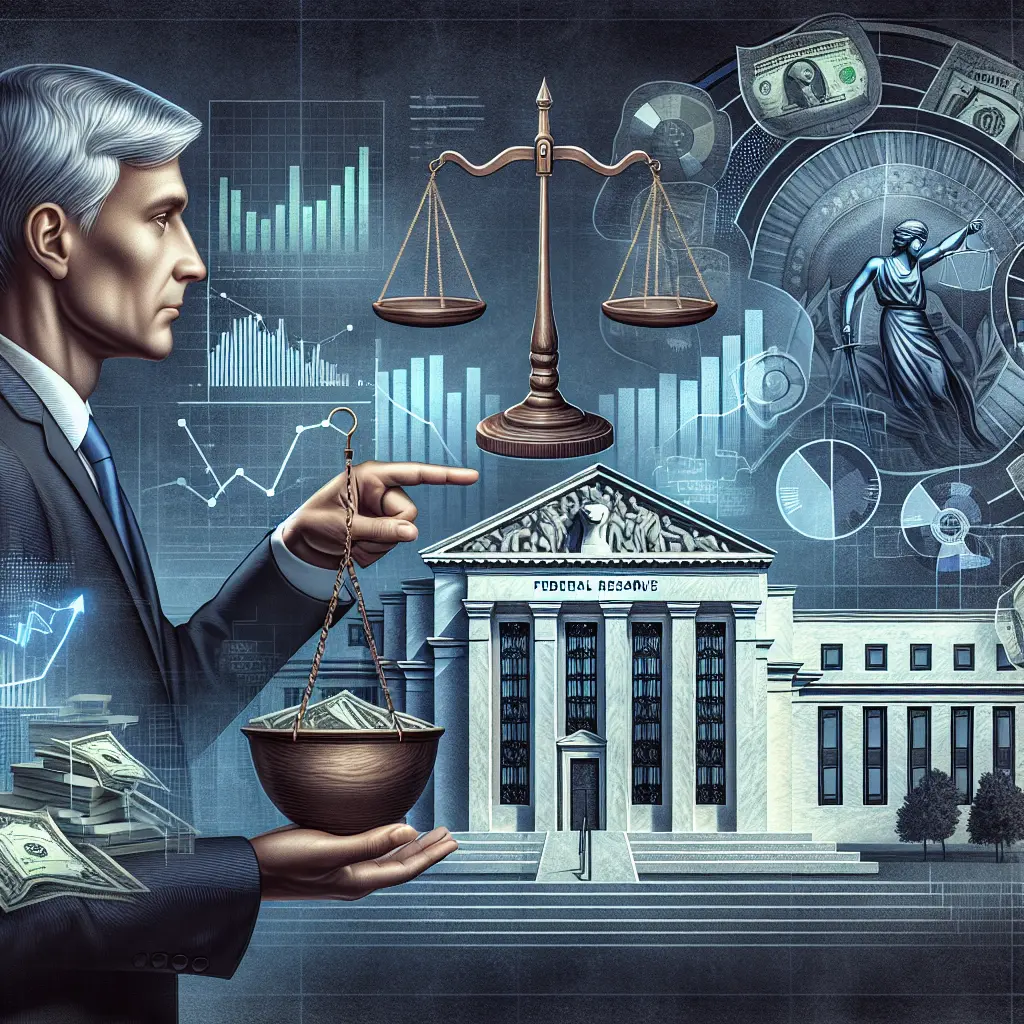
The presidency of Donald Trump was marked by a series of bold maneuvers in economic policy, with significant implications for the Federal Reserve and monetary policy. Throughout his tenure, Trump's interactions with the Federal Reserve, under the chairmanship of Jerome Powell, showcased a unique dynamic that had profound implications on interest rates, inflation control, and broader economic impact. Understanding these interactions provides a nuanced view of the Trump administration's economic strategy.
Donald Trump and the Federal Reserve: A Tense Relationship
Donald Trump's presidency was often characterized by an unconventional approach to economic policy. This was evident in his public criticisms of the Federal Reserve, which is traditionally expected to operate free of political pressure to ensure unbiased economic decisions. Trump’s vocal criticisms were aimed particularly at Jerome Powell, whom he appointed as Federal Reserve Chair in 2018. Despite appointing him, Trump frequently expressed dissatisfaction with Powell’s decisions regarding interest rates, which he believed were not lowered sufficiently to support his economic agenda.
The central tension revolved around rate cuts. Trump advocated for lower interest rates to sustain economic growth and enhance his fiscal policy initiatives. His administration argued that such rate cuts were essential for keeping the U.S. economy robust amidst various global economic pressures, including trade tensions with China. In contrast, the Federal Reserve generally takes a more cautious approach to altering interest rates, carefully balancing between encouraging growth and controlling inflation.
Impact on Monetary Policy and Interest Rates
Monetary policy during the Trump era was heavily influenced by these ongoing disputes. Despite the pressure, the Federal Reserve under Powell’s leadership made several critical decisions to cut rates, particularly in 2019 when the U.S. economy showed signs of slowing down. These decisions were seen as moves to preempt economic downturns but raised concerns about the potential for increased inflation.
Inflation control has always been a cornerstone of Federal Reserve operations. Under Trump, however, there was a noticeable shift towards prioritizing growth over inflation risks. This was evident from the multiple rate cuts during his administration which were aimed at supporting Trump's economic strategy, focusing heavily on investment and employment growth.
Trump’s Economic Strategy and Its Broader Implications
The Trump administration's economic policy can be broadly characterized by aggressive fiscal stimulus, including significant tax cuts and increased government spending on infrastructure. These moves were intended to bolster consumer spending and business investments. However, they also necessitated a delicate balance from the Federal Reserve to manage potential overheating of the economy and avoid runaway inflation.
Trump’s influence extended beyond domestic monetary policy to financial regulation. His administration rolled back several regulations put in place after the 2008 financial crisis, arguing that these were unduly burdensome for businesses. Critics argued that such rollbacks increased financial risk, potentially setting the stage for future economic problems.
Recent News and Its Connection to Trump's Economic Legacy
Recent events have continued to highlight the long-term impact of Trump’s policies on economic frameworks. For instance, Bitcoin enthusiasts have shown great support for Trump, likely appreciating his stance on deregulation which they see as beneficial for cryptocurrency markets (Bitcoin Bros Go Wild for Donald Trump). Similarly, Silicon Valley's complex relationship with Trump, marked by both support and criticism from tech billionaires, reflects broader uncertainties about the intersection of technology and regulatory policies (Donald Trump and Silicon Valley's Billionaire Elegy).
Elon Musk’s endorsement of Trump following a rally-related incident underscores the ongoing political dynamics influencing business leaders' decisions (Elon Musk ‘Fully Endorses’ Donald Trump After Deadly Rally Shooting). Such endorsements also bring to light concerns about how political figures and policies influence corporate strategies and market perceptions (By endorsing Trump, Elon Musk is gambling with Tesla’s future).
Conclusion: Assessing the Impact
The economic landscape during the Trump administration was undoubtedly shaped by its aggressive economic policies and its complex relationship with the Federal Reserve. While aimed at stimulating growth, these policies also posed challenges in terms of maintaining financial stability and controlling inflation.
As we reflect on this period, it becomes clear that the legacy of Trump’s economic strategy is a mixed tapestry of bold fiscal maneuvers and contentious monetary policies. It underscores the critical balance required between government policy-making and central bank independence—a balance essential for sustainable economic health.
In closing, as we continue to analyze and understand the broader implications of such dynamic interplays between presidential administrations and central banking systems, it remains crucial for observers and policymakers alike to learn from these experiences to better navigate future economic challenges.
Alexander Reid